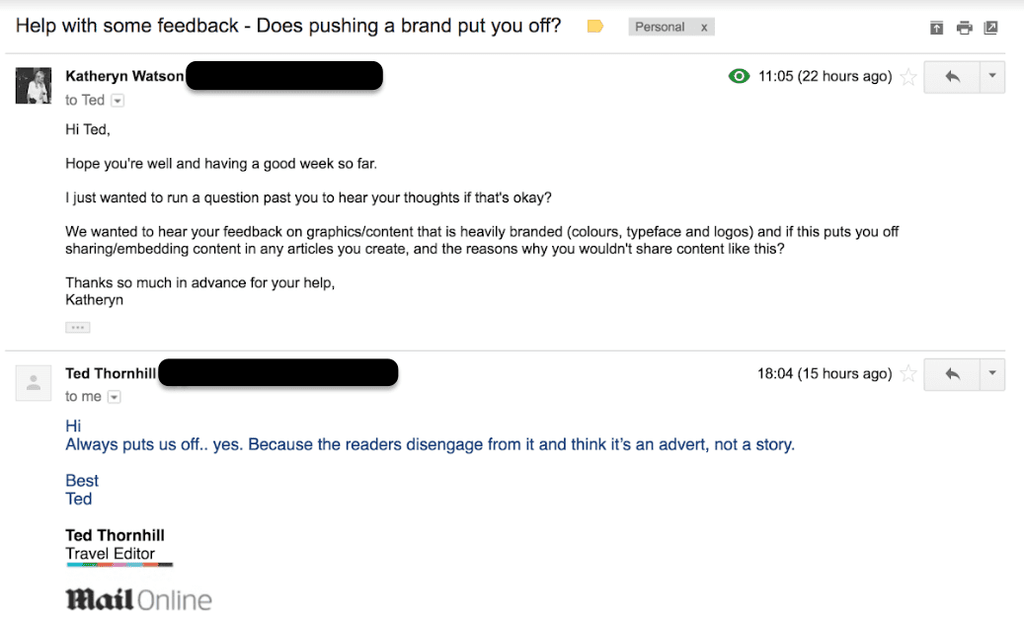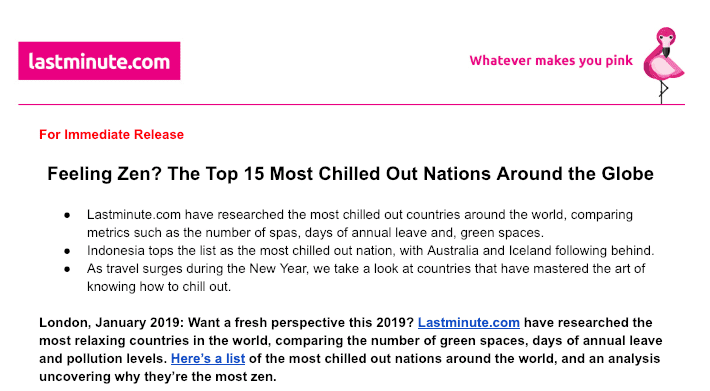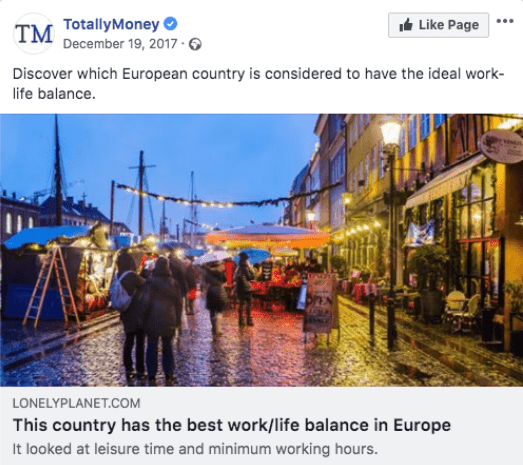Content
5 Tactics Digital PRs Can Borrow From Traditional PR

As seen on PRmoment.com
As PRs prepare to take on 2019, a couple of lessons we can take with us from outreaching campaigns in 2018 are: to have thick skin, keep an eye on the ‘to link or not to link’ arguments on Twitter, and to mesh with our clients traditional PR teams to help overall performance.
In order to continue chasing – and landing – big links for our clients (in what seems like an ever-crowded arena) we need to switch up our techniques and borrow tactics from our traditional PR cousins.
Here’s how to think out of the box with your 2019 digital PR efforts.
What are the Different Goals of PR?
For us to understand the techniques that can help strengthen our 2019 campaigns, we’re bringing things back to basics. Fully recognising the reasons behind why our clients are signing on with us for PR services in the first place ensures we can deliver work at the highest standard.
Link building
Arguably the #1 factor for companies onboarding with SEO and content agencies; to build backlinks to their domains in order to rank higher in search engines and result in more sales, customers, or traffic.
Link building can be conducted through many avenues:
- Tactical link building
- Broken link building
- Resource page link building
- Outreaching content
- Guest-posting
- Blogging – the list goes on!
Proactive PR, such as pitching in as per the news cycle and planning campaigns in advance, sits on the fence of link building and brand PR.
Brand awareness and brand identity
Put simply, brand awareness is how well consumers recognise, interpret and communicate with your brand. A strong brand awareness means that a lot of people understand your brand, the products/services you provide as well as what you stand for. A couple of brands with great brand awareness include Coca-Cola, Instagram, and Nike.
PR can be used to help build strong brand awareness and identit by positioning a brands personality in a certain light. This positioning can be achieved by guest blogging on certain platforms, selling the brands story, running events, applying for awards, sponsoring and partnering.
Inform an audience and building a relationship
Not all PR is operated with the sole purpose of projecting the brand out into the world.
Brands can use their platforms to inform their consumers of upcoming events, helpful guides, the arrival of new products – essentially anything interesting that they believe their audience will be inspired by. This can be done through their social channels, weekly email newsletters, and by distributing press releases into the media.
How Digital PRs Can Make Traditional PR Their Own
Want to achieve the three different goals of PR with a blend of both digital and traditional PR tactics?
Here are five traditional PR approaches and how to incorporate them into your digital PR strategy:
1. Brand Awareness
Aim of the tactic in Traditional PR: Build a strong awareness of your brand and the products/services they offer.
How to achieve it using Digital PR: Make your outreach campaign as compelling as possible. Inject the brand’s personality into every asset from your subject line to the closing copy on your static graphic as all written resources need to ooze your brand’s presence and what they stand for. This DOESN’T mean branded content. This is a big no-no for outreach. Think more inspiring and creative tones for your press releases and pitch emails.
Don’t shy away from using your brand reputation and awareness to help with outreach. They’re a big brand who have created a newsworthy piece of coverage, so why shouldn’t we shout about it? Consider leading with their name in the subject line.
You also want to shout about your amazing brand and coverage, but be careful about posting on social channels. Always check with your client first.
2. Branded Content
Aim of the tactic in Traditional PR: Using the brand’s colours, imagery or recognisable font to create content.
How to achieve it using Digital PR: We’re often told to steer clear of branding in the content marketing sector but the truth is, journalists won’t cover or link back to a campaign that is heavily branded. Why?
Straight from the horse’s mouth, these posts come across as sponsored or advertorial which puts writers off publishing. So, if our clients are asking us for branded content, how do we approach this?
We can take snippets of our clients’ brand guidelines and incorporate them in different ways such as:
- Adding their logo onto graphics
- Always including their boilerplate/header on press releases
- Adding internal links to intro copy of the campaign page to different areas of their website
3. Offline & Online
Aim of the tactic in Traditional PR: To receive as much coverage for the client online (on the web) and offline (in print publications).
How to achieve it using Digital PR: Working in a digital environment it’s only natural that we favour online coverage, and why wouldn’t we? It is what we’re monitored on. However it’s important to not forget how all of the coverage we achieve, golden followed link or not, should be accounted for and reported.
A recent example of this can be seen in some coverage for one of our travel clients. We secured an opportunity in print for a London distributed newspaper, which was also posted online with a followed link back to the content.
4. Social Media
Aim of the tactic in Traditional PR: Utilise popular social platforms such as Instagram, Facebook, Twitter, and Pinterest to build followings.
How to achieve it using Digital PR: In 2019, if you’re not using Twitter to a) Stalk your contacts and b) Reach out to them, do you even link build?
Prior to launching your campaign, get your client’s social teams onboard to share the content on their social channels. This can mean anything from a post on Facebook or Twitter to a Snapchat highlight. Also, be sure to start including social shares and mentions in your reports.
5. Product Launches in Person
Aim of the tactic in Traditional PR: Meeting journalists in person to share new products with them. Running through the key features together.
How to achieve it using Digital PR: Meetups aren’t just great for networking and relationships. They also have the potential to become a foot in the door for collaborations in the future.
Ever considered working alongside a journalist to create a piece of content or data set? It would be great to see things from a journalists point of view and fully understand the content they consider link-worthy.
We can take a leaf out of Greggs books and borrow steal the way they delivered their vegan sausage roll. Rather than offering content via email, we can consider delivering our campaigns in person or packaged up for an entirely different experience.
Adopting Tactics
Whether it’s not ruling out print coverage or promoting your campaign client-first, it seems we have a lot to consider whilst pitching our campaigns in 2019.
Which traditional PR tactics will you be implementing this year? Let us know.
Share












